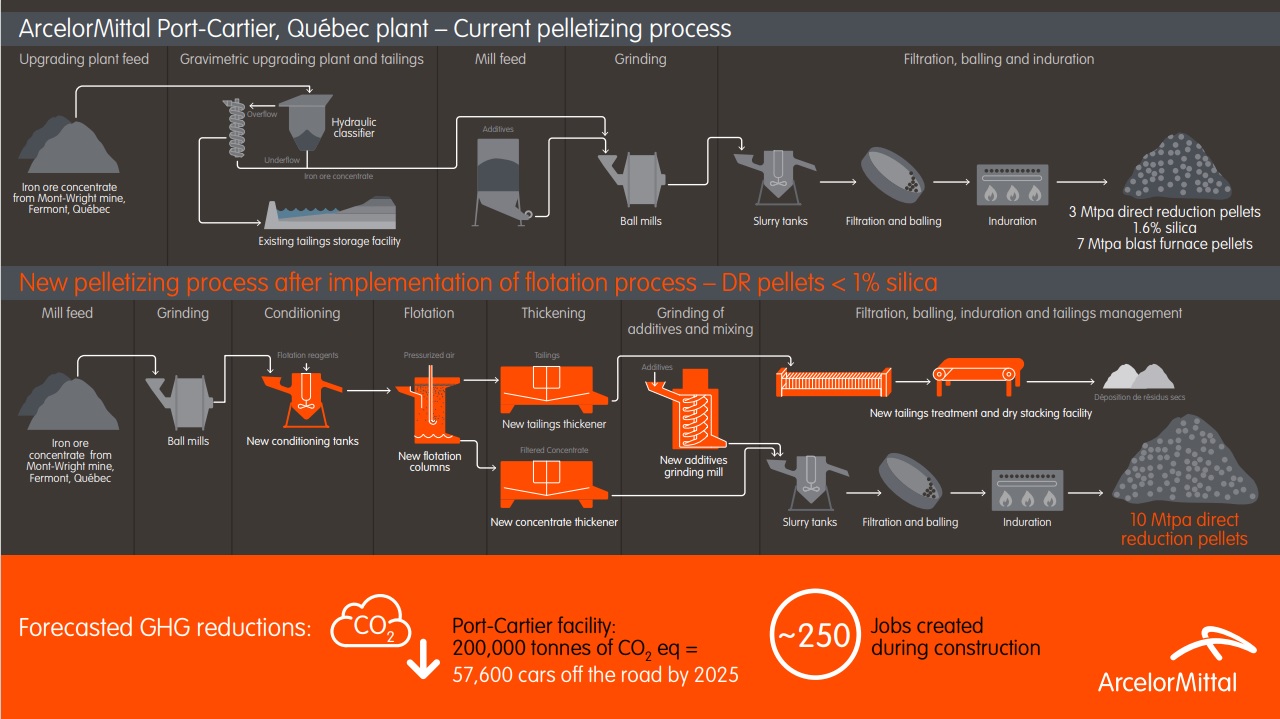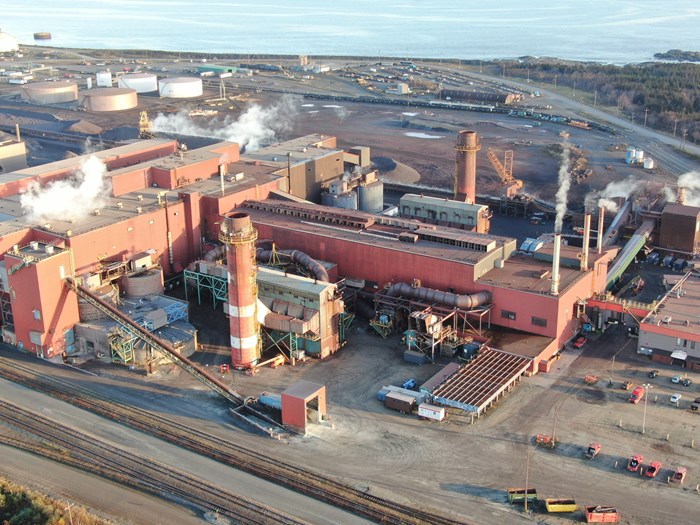ArcelorMittal Mining Canada is investing in a project using a new flotation system at its Port-Cartier pellet plant in Quebec, Canada, that will allow it to convert its 10 Mt/y pellet production to direct reduced iron (DRI) pellets by the end of 2025.
The announcement was by ArcelorMittal and the Government of Quebec at COP26 in Glasgow, Scotland, this week.
The C$205 million ($165 million) investment, in which the Quebec government will contribute through an electricity rebate of up to C$80 million, will enable the Port-Cartier plant to become one of the world’s largest producers of DRI pellets, the raw material feedstock for ironmaking in a DRI furnace, ArcelorMittal said.
The implementation of the flotation system (see graphic below) will enable a significant reduction of silica in the iron ore pellets, facilitating the production of a very high-quality pellet, according to the company. It will also include new tailings and concentrator thickeners and new additives for the grinding process.

“The project will deliver a direct annual CO2e reduction of approximately 200,000 t at AMMC’s Port-Cartier pellet plant, equivalent to over 20% of the pellet plant’s total annual CO2e emissions,” the company added. This reduction in CO2e emissions will be achieved through a reduction in the energy required during the pelletising process.
A DRI plant uses natural gas to reduce iron ore, resulting in a significant reduction in CO2 emissions compared with coal-based blast furnace ironmaking.
In Hamburg, Germany, ArcelorMittal is trialling replacing natural gas with hydrogen to make DRI, with its industrial-scale pilot project anticipated to be commissioned before the end of 2025.
The DRI installations the company has announced it is developing in Belgium, Canada and Spain are all being constructed to be hydrogen-ready, so as and when green hydrogen is available in sufficient quantities at affordable prices the company can produce DRI with near zero-carbon emissions.
Approximately 250 jobs are expected to be created during the construction phase of the project in Port-Cartier, which is scheduled to be begin mid-2023 and complete before the end of 2025.
Quebec Premier, François Legault, said: “We are positioning our regions at the heart of the green economy of tomorrow. My message to companies looking for a place to reduce their greenhouse gas emissions is come and see us. We’ll help you carry out your projects promptly. Quebec is the best place in the world to invest in the green economy. To build together a greener, more prosperous and prouder Quebec.’’
Aditya Mittal, ArcelorMittal CEO, said: “This project has an important role to play in our efforts to reduce our group’s CO2e emissions intensity by 25% by 2030, and our longer-term ambition to reach net zero by 2050. Not only does it deliver a significant reduction in our emissions at AMMC, but it also expands our ability to produce high-quality DRI pellets, which we will need in significant volumes as we transition to DRI-EAF steelmaking at our steel plants in Canada and Europe.
“I am grateful to Premier Legault and his government for the support it is providing in realising this project. It is the first significant decarbonisation project we have announced for our mining business and fitting that we are able to make this announcement at COP26 as it exemplifies the transformational change we need to deliver this decade as we move towards becoming a carbon-neutral business.”
Mapi Mobwano, CEO, ArcelorMittal Mining Canada, added: “This investment will see us become one of the biggest direct reduction pellet producers in the world, thereby propelling ArcelorMittal Mining Canada into the forefront of mining and steel decarbonisation. From 2025 onwards we will have the capacity to produce 10 Mt of very high-quality iron oxide pellets, with low silica content and high iron density, which will be highly strategic in the years ahead.”











